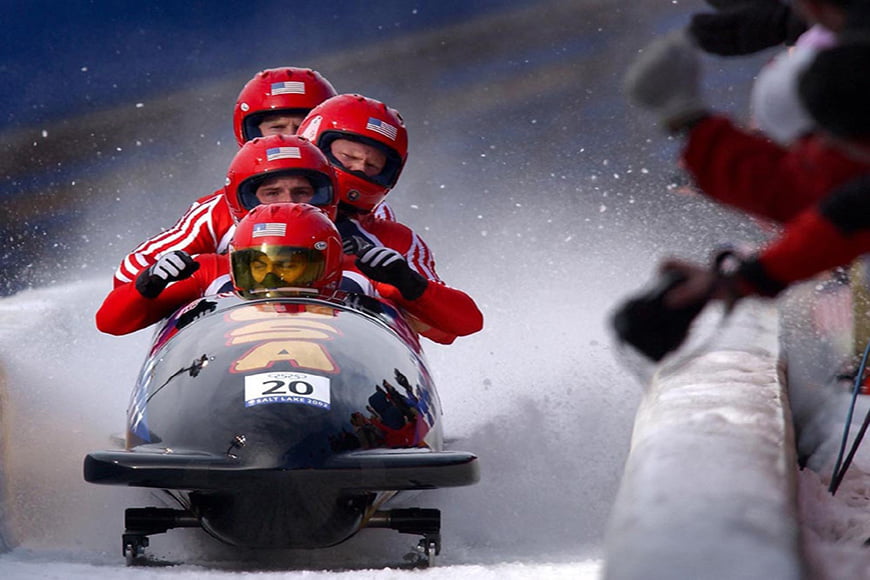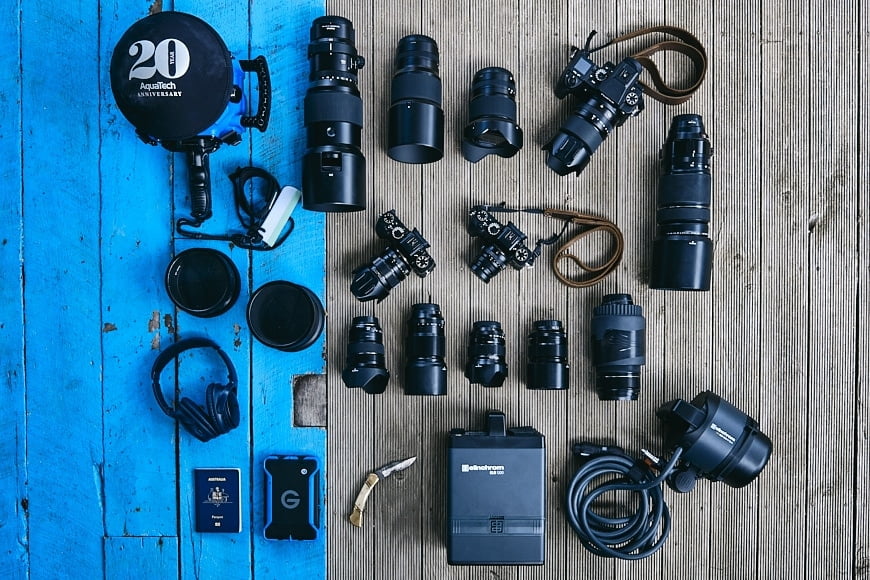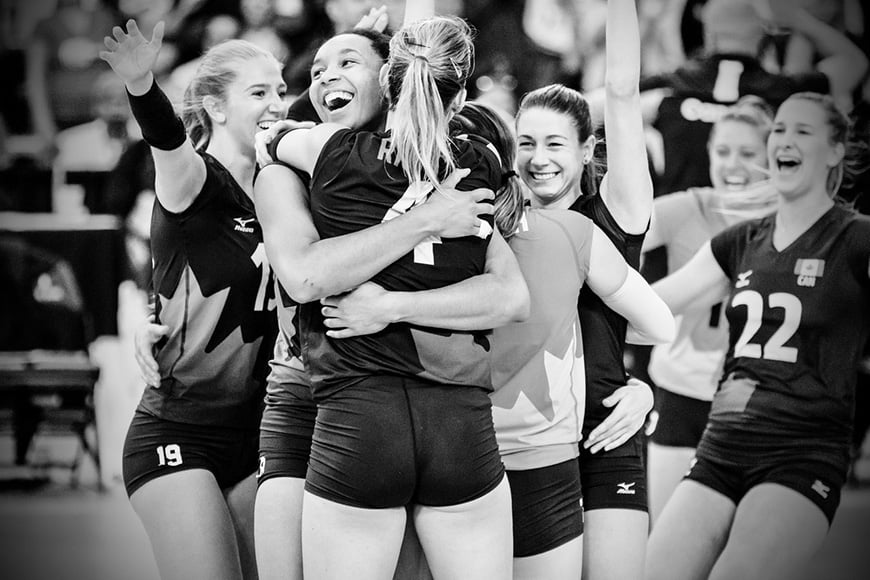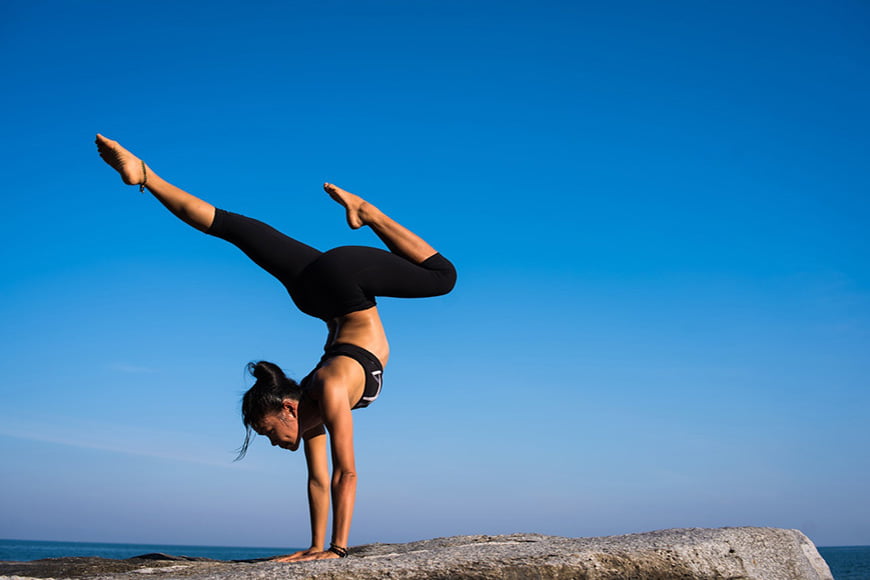
Guide to Sports Photography
Find out the best sports photography tips and ideas in this must-read guide! From camera gear to settings to how to become a pro... read on!
By Ana Mireles
Sports are part of our lives in many different ways; maybe you’re a fan of a professional team, or you like to go jogging, or perhaps your children are in the school’s team.
Whatever the level, there’s something exciting about capturing that action.
Whether you want to take photos of family and friends at their sporting games, or you want to delve into professional photography for sports, this article is the one for you.
What is Sports Photography?
It’s a type of photography that focuses on capturing sports. While it’s usually dedicated to news and editorial, it’s a stand-alone genre.
It requires a special skill set because it’s a very high paced environment full of excitement and also challenges.
Every sport has its own considerations depending on the location and rules, so a sports photographer needs to adapt to different circumstances.
In this article, you’ll find some sports photography tips for amateurs and pros.
How Do You Become a Sports Photographer?

Credit: Pixabay
Like any other photography job, you need to master the skills and build a strong portfolio. Fortunately, you can find public sports events and people playing sports almost everywhere which makes it easier to practice.
If you play any kind of sport, it will be easier if you start by photographing that one. This way you know the rules that will make you identify the best moments of the game.
You’ll also know the gear and the places to frequent to find people practicing or playing. Then you can wider your horizon and move on to other sports.
Often it’s easier to start by doing freelance work and selling it as stock photography. After you have a strong body of work you can look for professional sports photography assignments.
Some sports have more competition than others. This might change depending on where you’re from, but soccer for example is popular everywhere.
This means that there’s more work in it, but also that it will be more difficult to get your foot in the door.
Try thinking about other sports that you can cover. Marathon, for example, yoga, rafting… there are tons of options that aren’t necessarily the first thing that comes to mind.
Browse sports publications to familiarize yourself with the style and learn what’s important to focus on.
Sports magazines might have more use for full projects and storytelling, while newspapers will need only one image that shows the highlight of the game.
How Much Money Does a Sports Photographer Make?
This is very variable depending on if you’re a freelancer or you work for a media company or the team itself.
The Bureau of Labor Statistics allocates as median pay for photographers (no specification on the type of photography) which is $17.44 per hour, and $36,280 per year.
It’s clearly different to work for a local sports club than the NFL. Speaking of which, Sportscasting published an article entitled How Much Do NFL Photographers Make?
In it, the author mentions that some photographers charge an hourly rate that goes from $50 to $300. Others, a flat rate per event (4-8 hours) that ranges from $500 to $3000.
She also mentions that even in a high profile league like the NFL, not all the games have the same level of importance and your rate needs to reflect it.
Of course, you can’t start earning as much as an NFL photographer, but it’s an end goal.
Research photographers in your area to understand the market. Keep in mind that experience counts too. As your sports photography business portfolio gets bigger and your skills get better you can increase your rates.
What Equipment Do I Need for Sports Photography?

Sports Photography Gear | Credit: Russell Ord
The equipment you need greatly depends on the type of photography you want to do, i.e. amateur or professional.
Also, different sports will present different challenges, and the gear should be chosen accordingly. Obviously, professionals that travel to the Olympics to cover it for large newspapers will need much more equipment than a casual shooter.
Lastly, it will depend on your budget. Having said that, there are a few things that should cover a wide range of photographers regardless of the field and level of expertise.
So, if you want to take pictures of your children playing sports or if you are building your first kit as a professional this guide will be equally helpful.
-
Camera
The features you need to look for in a camera if you want to make great sports photography are the focusing speed and the fps value (frames per second).
This last one goes hand in hand with the buffer depth, in other words, how many images can the camera process without pausing. This is because you’re dealing with moving subjects and fast-paced action.
In sports photography, the lens is also important. You will need a DSLR camera or a mirrorless, I’ll recommend some in a moment.
However, if you’re just looking for a good camera to photograph your children’s games or your neighborhood team you can stay in budget with a good compact camera.
For example, the Leica D-Lux Typ 109 has a 13-megapixel sensor which is not much but should be enough for your needs. What makes it better than others for sports is the 24-75mm lens. Plus 49 focus points that will allow you to keep your subjects sharp, and an 11fps to ensure the perfect shot.
If you want to get more serious, before you invest in gear that won’t help you grow, it’s important to understand what cameras sports photographers use?
If you’re a beginner photographer or an amateur photographing family and friends, the Canon EOS 7D Mark II is a great option. It offers speed and accuracy with a continuous mode of 10 fps and 65 cross-type auto focus sensor.
For the Nikon enthusiast, the best choice is the D500. The burst rate is 10 fps with 153 auto focus points. It also performs well in low light situations because it doesn’t create much noise even if you push the ISO.
If you’re a pro, you might want to go with a Nikon D5 that has excellent subject tracking auto focus which makes it ideal for sports photography. Also, the continuous mode is 12fps with a buffer depth of 183 frames, so you won’t even notice it.
If you’re a Canon user, then the EOS 1D X Mark is the way to go. The 20 fps rate puts it above others to shoot fast-moving action. Also, the robust build, ergonomic grip, and long battery life will make it the perfect companion for the most extreme situations.
As for DSLR vs mirorrless camera bodies, the latter usually have in-body image stabilization, even on entry level models. This feature can help minimise camera shake, allowing you to capture a sharper shot when at sporting events.
See our complete guide to cameras for sports photography.
-
Lenses
Most photographers agree that the lens is more important than the camera. Often they are more expensive too, that’s why you need to choose wisely when purchasing.
I’m sure that being interested in sports, you’ve watched or attended professional games. And without a doubt, you’ve noticed that photographers use notoriously big lenses, much more than other types of photographers.
That’s because the main characteristics needed are a long focal length and a wide aperture (for shallow depth of field and/or better low light performance). A combination of both results in physically big lenses.
Some sports photos require you to use something between 300mm to 400mm and some are able to hold teleconverters to add some extra length.
Another consideration is that zoom lenses usually are better. Normally a combination of prime lenses is recommended because they deliver sharper images and have wider apertures.
However, in sports photography, you don’t have the time to be changing your lens because you could miss the action.
Of course, it depends on your budget and the type of sport you’re after. But just to get you started, here are some excellent lens choices.
A good entry lens is the Canon EF 70-200mm f/2.8L USM. The wide aperture allows it to perform well with low light. It has an ultrasonic motor for fast auto focus and it’s compatible with 1.2x and 2x extenders if you need to get closer to the action.
For Nikkon users, the 80-200mm f/2.8 D ED AF is just as good. It has built-in auto focus that is enhanced by the focus delimiter switch to make it faster and more efficient so you will never miss a shot.
If you don’t want a zoom lens, you can go with a Canon EF 400mm f2.8 L IS II USM. It will deliver amazingly sharp images.
Nikon has its own superlens for sports photography and that’s the 300mm f/2.8 that has a great image stabilizer, reduces vibrations, and comes with extremely fast auto focus.
-
Accessories
Monopod – Because the lenses are so big and heavy, you’ll need help to support and stabilize them. In sports photography, tripods are not very practical, even if they would get the job done.
Instead, try using a monopod which is faster to set up and easier to move, this way you can follow the action wherever it happens.
Extra battery and memory cards – Since you’re probably going to be using burst mode very often, you’ll fill your memory cards extremely quickly. Be sure to bring enough of them.
The same goes for the battery, you wouldn’t want to run out before the end of the game.
Lighting – depending on how close you can get to your subject, strobes or flashes may be required. This is especially the case with fitness photoshoots, where dramatic lighting can help highlight the model’s muscles and physique.
22 Sports Photography Tips
There’s a lot more than just gear to make quality photographs in this field. Everything happens fast, usually from a distance, and you need to keep up!
Here are 22 sports photography tips to help you out.
1. Pick the right gear

Credit: Guy Kawasaki
I already talked about the gear you need for sports photography, but there are some situations where you need to add some special equipment.
Think about the weather conditions, if the gear could get wet, etc. and pack your camera bag accordingly. Invest in a robust camera body for action shots, where your prized possession may take a beating!
2. Burst mode

Credit: Pablo Rebolledo
Trying to react in time to capture a moment in sports can be very difficult. If you shoot multiple images in a sequence with a fast shutter speed, you’ll have a better chance of getting the perfect picture by holding down the shutter button in burst (continuous) mode.
Depending on the camera model you own, choose burst mode in your settings, select the fastest shutter speed the light in your scene will allow, focus on your subject, then hold down your shutter button, to turn your camera into a machine-gun!
3. Auto focus

Using continuous auto focus when shooting sports is a must for you to have a sharp subject. Things move quickly and fortunately, technology comes to your aid.
Delve into your camera settings and use AI-servo in Canon or AF-C in Nikon so that the camera can track the subject and keep it sharp while it’s moving.
4. Narrow depth of field

Credit: Eugene Lim
Using a narrow depth of field will create foreground and background blur, which can help separate the subject from the background. This will make it stand out.
To achieve this you have to set the aperture as wide as you can, which will also let in more light. Ideally, in a zoom lens, you’d be able to reach f/2.8. However, if you have a lower budget probably the maximum aperture will be f/4.
Telephoto lenses shot at their maximum range will also allow you to blur the background greater than wide angle lenses.
Using a wide aperture on your telephoto zoom lens will also allow you to use faster shutter speed.
5. Creative motion blur

Creating intentional blur can make your image look dynamic and show the motion that is inherent to the sport that you’re photographing.
Using a slow shutter speed you can follow the subject and blur the background. In other situations, it’s better to have a static background and have the subjects leave a trail.
It all depends on the effect that you’re going for. This technique might take a while to master but once you do, you’ll get very rewarding images.
If you don’t like to use manual mode, set it to shutter priority. This way, you can try different shutter speeds to get different motion blur effects and the camera will set the corresponding aperture.
6. High ISO

Credit: Derwin Edwards
Very often you’ll find yourself in low light situations and you need a fast shutter speed to freeze a fast-moving subject. If you already have the widest possible aperture, then you’ll have to raise the ISO.
Obviously you don’t want a noisy image, so you’ll have to balance the amount of available light with the high ISO capabilities of your camera. Play around with that f stop and shutter speed to keep your ISO manageable.
7. No chimping
Chances are that you’re going to have tons of images at your next sports event, and most of them will be bad. That’s OK, it’s part of the deal.
However, you can take care of that when you’re back at the studio. Don’t lose time and waste battery by checking your images every time. Especially if you’re using burst mode.
Just check for the exposure every once in a while if the lighting conditions have changed. Anything else can wait.
8. Practice makes perfect

Credit: Neonbrand
Not all sports are about the professional leagues, the Olympics, or even a sporting event. There’s a lot of people who train every day or play in amateur teams.
This can be great practice, and you can sell the photographs in stock websites for a local newspaper or a gym brochure.
9. Capture faces

Credit: John Torcasio
Showing the face of the player can make a very powerful photo. If you manage to capture the concentration in their eyes or the tension in the muscles, then you’ll get the viewer to feel the emotion of the moment and get involved through your images.
10. Show context

Credit: Jimmy Conover
Showing the player, the move, the goal… that’s extremely important but that doesn’t mean that it’s not part of a bigger scene.
Including the context will help tell the story. Open up the field of view with a wide-angle lens, or position yourself in different places to show different backgrounds.
11. Try new angles

Credit: RF._.Studio
Always being in the same spot will make your images look dull. Walk around the field, walk up and down the sitting area, duck, climb, whatever it takes.
Look for interesting elements to create a composition, also changing the focal length can help you get more variety. For example, a wide-angle lens is not the norm, but it can be useful to show a big stadium. Just make sure that you never get in the way.
12. Anticipate their moves

Credit: Lars Bo Nielsen
The action happens very fast in some sports and it’s important to get ahead or else you’ll miss it. To be able to do this you’ll need to know the rules of the game.
Often the player is trying to hide their intentions or wants to mislead the opposite team, you need to be able to get past that to anticipate their moves.
13. Details

Credit: Jose Morales
Photographing details is very useful for storytelling. It’s also something you can sell in stock photography websites. You can use a telephoto lens to capture them from afar.
14. Capture the emotion

Credit: Annie Tsung
Many people think that all sports photos are about action. Although that’s often the case, there’s a lot of emotion going on that’s worth capturing.
15. Use shutter priority mode

Credit: Flo Maderebner
In sports photography, movement is often the main subject. Using your camera in shutter priority mode gives you the freedom to focus only on adjusting the shutter speed, and the rest will adjust automatically.
If you choose a fast shutter speed you can capture a perfectly sharp image. However, showing the shutter speed down allows you to add motion blur. You have full control over your shutter speed while always keeping the right exposure.
16. Shoot what you love

Credit: Omid Armin
The best images will always come from a combination of technique and passion. If you shoot what you love, you’ll be better at it.
There’s no need to always focus on the most popular sports, specialize in one that you practice or follow. It will certainly start you off on the right foot.
17. Be versatile

Credit: Chevanon Photography
If you’re an amateur, you can choose to photograph whatever you like. As a professional though, you need to have the versatility and be quick on your feet.
Let’s say that you work for the sports section of a newspaper. One day they can send you to a baseball game, and the next to a yoga session. You need to be able to deliver good images no matter what.
18. Try drone

Credit: Carles Rabada
Technology moves forward and we should move with it. Nowadays you can take wonderful images using drones.
Using them for sports photography can give you a bird’s eye perspective impossible to reach any other way.
Just make sure to research if it’s permitted because drones are not allowed in some places. Also, to pilot some of them you need a license, so get well informed to avoid fines.
19. Be safe

Credit: Feo con Ganas
Always be aware of where you are, you want to avoid getting hurt or being a hazard to anyone else.
If there’s a dedicated section for photographers and you’re asked to stay there, follow the instructions.
If you can walk around always do it with your eyes wide open, not only for the best possible photo but for possible danger.
20. Double duty with an action camera

Credit: Brett Sayles
Who’s to say that sports photographers can’t enjoy the action. If you’re a sporty person grab an action camera and double-duty.
21. Edit
Take the time to edit and be objective and self-critical. This will help you to learn from your mistakes and improve. Also, just select the very best for your portfolio.
And for the editor, send a good selection of no more than 50 (depending on the event). They are busy professionals and they won’t hire a photographer that doesn’t know how to edit and makes them waste time looking over 500 bad photos.
22. Post-produce

Credit: Ashutosh Sonwani
The amount of post-production will depend on your style and on the context where your image will be shown.
If it’s for a newspaper, postprocessing needs to be minimal, following the journalism ethical rules while editorial or fine art sports photography can be more creative.
Sports Photography FAQs
What skills do you need to be a sports photographer?
It’s crucial to master the technical aspects of your gear, as you’ll need to quickly adapt to changing conditions. Patience, perseverance, and a good eye for composition and framing are also highly important.
What is the best aperture for sports photography?
Unless you’re shooting a wide scene, keep your aperture open for a shallow depth of field (around f/2.8-f/4 as a rough guide). This means your subject will be in focus while the background is blurred, which makes the subject stand out more. If you want to keep more of the background in focus, increase the f-number.
What camera do sports photographers use?
Sports photographers use high-performance DSLR or mirrorless digital cameras. The main characteristics they look for in a camera are fast autofocus speed, high fps value (frames per second), and good buffer depth.
Final Words About Sports Photography
I hope you enjoyed reading about sports photography – now it’s time to grab the camera and photograph your next sporting event!
Share your experiences and your own photography tips in the comments below.


Check out these 8 essential tools to help you succeed as a professional photographer.
Includes limited-time discounts.














